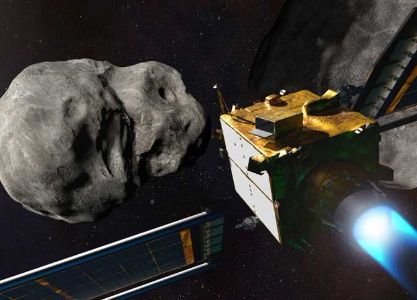
-
Published: 11 October 2022

In an experiment that indicated that it would protect the Earth from any future threats, NASA announced that the spacecraft that deliberately pushed it to collide with an asteroid last month had succeeded in pushing it out of its normal orbit, the first time humans had changed the movement of a celestial object.
The results of observations via the telescope uncovered in a NASA briefing showed that on September 26, the spacecraft's suicide test flight (DART) achieved its primary goal, which is to change the direction of an asteroid through absolute kinetic force.
On September 26, the agency deliberately struck a 500-foot-wide asteroid spacecraft called Demorphus, orbiting a much larger asteroid called Didymus, with a highly successful test.
Although it is not the first time humans have intended a deliberate collision between a spacecraft and a space object, NASA's latest experiment is the first in terms of altering the asteroid's orbit and preparing a strategy for the future disposal of any threatened asteroids.
NASA Administrator Bill Nelson told reporters on Tuesday: "NASA is trying to be ready for anything the universe throws at us, we have shown the world that NASA is serious as an advocate for this planet."
This shift in the asteroid's orbit suggests that a spacecraft collision with an asteroid to derail it is a reasonable way to divert any dangerous asteroids that threaten the Earth in the future.
This method is called a motor impact strategy, which is likely to be scalable for dispersing much larger space rocks that can cause mass extinctions on Earth, as long as they are detected early enough.
The spacecraft, slightly less than the size of a vehicle, was expected to collide with the asteroid at 23:14 at speeds of more than 20 thousand kilometres per hour.
Just minutes before the vehicle crashed into the asteroid Demorphus, which is 11 million kilometres from Earth, the image of the offence grew ever bigger as the spacecraft approached it more and more.
In a live transport, cameras mounted on the spacecraft broadcast spectacular images of the astronomical object in which all the details of Demorphus appeared, including its grey surface and the small gravel covering it, and the moment the vehicle collided with the asteroid and crashed on it stopped broadcasting the images
Demorphos takes 11 hours and 55 minutes to do a full course around Didymus. However, through its mission, NASA sought to reduce this duration by 10 minutes by reducing Demorphus' orbit by approaching Didemos.
